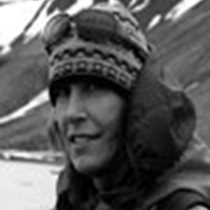Rio Ucayali: Rio Dorado & Atun Cancho
You know it’s a good day when you begin with a rainbow over your boat at a river called Dorado. This morning, we varied the schedule that we’d settled into, still allowing kayakers a daybreak exploration, but rousting all interested parties at 6:30 to head off at 7, just as the kayakers returned. The eerie calls of red howler monkeys penetrated the dense canopy along the Rio Dorado as kayakers explored a small riverine lake (what is lake? what is river? These philosophical questions are one of the things one is free to pursue while paddling in the early light).
The skiff ride unveiled riches beyond imagining. Near the mouth of the river, a collared anteater, or southern tamandura, was perched on a bare branch. Although the guidebooks say that these long-clawed creatures are fairly common, we know they are rarely seen on our expeditions on the Delfin II, and it’s hard to imagine that they’re ever seen as clearly and leisurely as the one along the river was today. We could make out the glint of its small eye, the deep hollow of its large ears, the sheen of its thick claws. “It’s got a runny nose!” someone in the skiff exclaimed.
Eventually, we left this long-snouted termite-eater and carried on upstream, keeping a sharp eye on the banks. The challenge of spotting wildlife in Amazonia is that it’s not just one pattern or location that must be attended to, but many… and many sounds, too. We caught the whistles of squirrel monkeys, the silhouette of horned screamers, and the intricate reflections of bromeliads in the flooded trees.
Breakfast recharged us, and we continued up the Ucayali, then over onto the Puinahua Channel toward our afternoon excursion site. Adonai led a demonstration in making juanes, a local to-go dish, and we gathered to collectively list the wildlife sightings of the last twenty-four hours. A talk about the origins and diversity of Amazonia followed lunch, then we were ready to head out again.
We spent the afternoon exploring new areas, an endeavor that thrills the heart of every explorer. The Delfin II tied off to a tree in true Amazonian style, and we headed out by skiffs. First, we crossed the Puhinaua Channel and traveled along a narrow corridor of fast-moving water lined with wild cane. Soon we were able to see papaya trees in neat rows and bananas, and then the call of a dog alerted us to the home of the farmer. He wasn’t home, but we were able to see his home and creatures. Clearly, he’d decided that a solitary life was best. The nearest community was about an hour by motorized canoe.
Stopped by a downed tree, we retraced our steps and then delved in to the wide lakes behind the Delfin II. Wow. Here, the world was still and yet bustling with life, dark and yet vivid. The sun set around us, and we listened to the chorus of frogs rise from the grasses. No amphibians were spotted, but we did have great looks at a great potoo and a couple of Peruvian pink-footed tarantulas.




